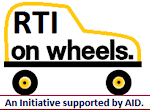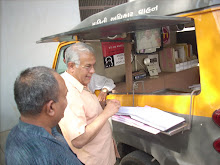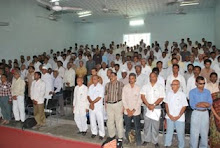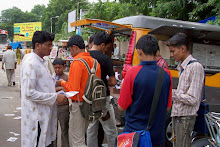The Week :Sachidananda Murthy:Sunday, December 04, 2011.
Rattled by the series of tough judgments on the Right to Information Act, a group of bureaucrats in North Block has started work on amendments which will restrict “fishing inquiries” and protect the higher Constitutional offices. Their latest irritant is the order of the Goa Bench of the High Court of Bombay, which said that the situation report sent by a Governor to the President and the Centre should be given to anyone seeking it. Home Ministry officials who process these reports for political decisions by the Prime Minister and home minister are worried and have asked for legal advice from the ministry of law and justice.
The Constitution is silent about Governors' reports. But it says the correspondence between the Governor and the state government is confidential, extending the same secrecy to correspondence between the President and the Prime Minister at the federal level. Ministers have been saying that officials think twice about writing on a file, as their honest opinions can get twisted and blow up by RTI activists, who have their own axe to grind.
Even the Prime Minister was surprised that there were RTI applications for cabinet papers, and the activists were appealing to the Central information commission. The flood of applications seeking copies of voluminous files is swamping some ministries. The Congress had a dose of its medicine when it asked for the files of the National Rural Health Mission's implementation by the Mayawati government. The state Congress had to arrange a mini truck to transport the thousands of files released under RTI.
But Central and state governments have realised that it is difficult to send the ‘transparency genie' back into the bottle. Defence Minister A.K. Antony recently noted that everyone has not yet understood the implications of the “transparency revolution” which has swept the corridors of powers.
Manmohan Singh has many hurdles to face before the RTI provisions are tightened. There will be howls of protest and demonstrations in the streets by RTI activists and those who have benefited from the transparency in administration.
Then the government has to convince the National Advisory Council, headed by Sonia Gandhi, which had brought forward this legislation during UPA1. Many of its members like Aruna Roy are passionate advocates of RTI and would not agree for its dilution. Even if the NAC okays the changes, the government would find it difficult to convince the opposition parties, which are on a warpath against the government over issues like foreign direct investment in the retail sector, black money stashed abroad and inflation. It is a Hobson's choice for the government.
The Constitution is silent about Governors' reports. But it says the correspondence between the Governor and the state government is confidential, extending the same secrecy to correspondence between the President and the Prime Minister at the federal level. Ministers have been saying that officials think twice about writing on a file, as their honest opinions can get twisted and blow up by RTI activists, who have their own axe to grind.
Even the Prime Minister was surprised that there were RTI applications for cabinet papers, and the activists were appealing to the Central information commission. The flood of applications seeking copies of voluminous files is swamping some ministries. The Congress had a dose of its medicine when it asked for the files of the National Rural Health Mission's implementation by the Mayawati government. The state Congress had to arrange a mini truck to transport the thousands of files released under RTI.
But Central and state governments have realised that it is difficult to send the ‘transparency genie' back into the bottle. Defence Minister A.K. Antony recently noted that everyone has not yet understood the implications of the “transparency revolution” which has swept the corridors of powers.
Manmohan Singh has many hurdles to face before the RTI provisions are tightened. There will be howls of protest and demonstrations in the streets by RTI activists and those who have benefited from the transparency in administration.
Then the government has to convince the National Advisory Council, headed by Sonia Gandhi, which had brought forward this legislation during UPA1. Many of its members like Aruna Roy are passionate advocates of RTI and would not agree for its dilution. Even if the NAC okays the changes, the government would find it difficult to convince the opposition parties, which are on a warpath against the government over issues like foreign direct investment in the retail sector, black money stashed abroad and inflation. It is a Hobson's choice for the government.















































































